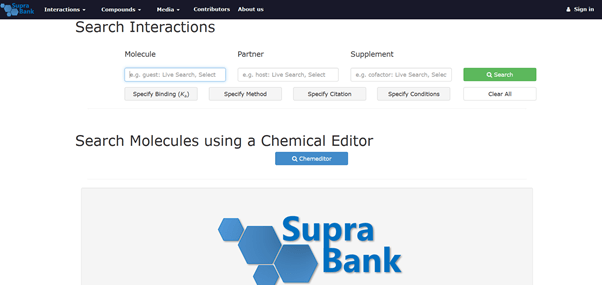For chemists, it is crucial to know the advantages of different data repositories in order to find the best fit for their research data requirements. Here, we provide a brief overview of SupraBank as part of our series “repositories in profile”.
SupraBank

Basic information
❏ Homepage: https://suprabank.org
❏ Creation date: 2019
❏ Country: DE
❏ Domain: Organic Chemistry
❏ Usage: Open Access (data view), registration required (data contribution)
❏ Target group: Chemists, biologists
❏ User documentation: –
❏ Number of datasets: 4000, 3700 are curated
❏ Recommended by journals/societies: No
❏ Listed in: re3data: r3d100013265, FAIRsharing: bsg-d001818
Functionalities and technical information
❏ Content: Supramolecular interactions
❏ Content origin: From projects
❏ Searchable content: Experiments and related components according to the input
fields, molecule interactions, publications
❏ Accepted data types: JSON (DataCite), CDX (for 2D/3D molecule structure), PNG,
proprietary formats
❏ Used standards/ontologies: DataCite 4.0, Dublin Core for metadata tags
❏ Curation: Non-judgmental plausibility check
❏ Access rights/license information/embargo: CC licenses (CC0, BY, BY-SA),
embargo possible (unlimited)
❏ AAI solution: Internal user administration (anonymous and non-anonymous user,
data provider, administrator)
❏ Persistent Identifier system: DOI (Digital Object Identifier)
❏ Authority identifier system: ORCID (Open Researcher and Contributor iD)
❏ Used Software: Relational database (PostgreSQL), Ruby on Rails
❏ Interfaces: Web interface (CSV, JSON, BibTex, RIS, Endnote)
❏ Further functionalities/tools: Molecules presented as picture, structure editor,
simulation modeler tool